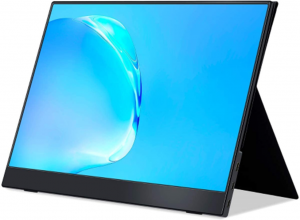March 2022 Newsletter
Where is your biggest security threat coming from?
Where is your biggest security threat coming from?A lot of business owner’s perception is that the biggest security threat come from their staff. So all the wise companies spend some time and money training their staff on what to do and not what to do. And whilst they might be the weakest link, someone else has privileged access to your network.
Yes, that’s right – Your IT company (or us, if you are one of our clients).
Why?
An IT company typically has the following when it comes to your network:
-
*Their remote access and anti-virus tools are in your network.
*They should have good documentation on your system to explain how it works and what the key systems are.
*They have higher privileges, such as domain admin rights.
Best Practice and Standards
If the IT company doesn’t follow good Cyber Security Best Practices and Standards (such as Cyber Essentials) they could be compromised by a hacker. That would mean that it might be possible to access all the IT providers customers systems, using those tools.
A Weak Link or Low Hanging Fruit?
Cyber criminals have figured this out and are actively targeting IT Managed Service Providers (MSPs as our sort of business are often known). There are specific units within nefarious government organisations that are actively targeting MSP’s/IT companies. If they can get into an MSP (or in the case of Solarwinds, multiple MSP’s) then they can get 30, 40, 100, 1000’s, of companies, for their time and money.
It could be argued that IT companies are the lowest hanging fruit.
What does this mean?
Should I fire my IT provider right now, and bring everything back in house? Well, that is certainly an option. However, there are lots of reasons why you outsourced it in the first place:
-
*Reduce cost by making the right investments at the right time
*Limited expertise of one person,
*Your time and ability to manage your own IT function (what are they actually doing, and does it make sense? Investing in management tools)
*Keeping up to date with, and awareness of, tech trends and what other businesses are doing.
If anything, they are truer today not less.
What other options do I have?
Both organisations need to make sure we are doing everything to protect ourselves, and plan for the events that could unfold due to a compromise.
Most businesses can become consumed by events and drift into firefighting mode. IT businesses seem particularly susceptible to this. Generally, they are led by technical rather than business people. Most are “support” companies, which is reactive at its heart, and it is a relatively new, immature and fast moving industry.
Everything that needs to be done to protect, mitigate and de-risk a cyber incident needs to have planned and thought through BEFORE it takes place. Something that is completely impossible if the organisation is firefighting.
How do we fix this problem?
The answer is that that the IT company needs to deploy discipline. This is done by having dedicated proactive roles with scheduled time to follow established processes. They need people dedicated to researching emerging threats, and how to mitigate them.
How can you help?
1. Plan ahead - asking us (or your IT company) to do things with little, or no, notice means we either need to take someone off a scheduled proactive task at another client or say no. The consequences of both are bad for your business.
But the former is worse in the long run, as if we said yes to you, we would have to say yes to another client (and you might be the one who is let down).
The only option is that we double down on planning together.
2. Be prepared for your investment to increase. And probably increase again. Until the size of the problem plateaus, the investment required to deal with it will keep rising.
If we have learned one thing in 25 years in the IT industry, it is that advising our clients in making too little an investment is the biggest dis-service we can do.
Freesync 15.6’ FHD Portable Monitor

The pandemic has caused more Britains to start working remotely for their employers than ever before. If you’re working from home, or on the road, working from hotels, etc, you want to make sure you have the best devices available.
One of the best things you can add to make your work more efficient in your remote workplace is another monitor.
For instance the ASUS MB169C+
This monitor gives you an extra screen to work with as well as a 1080p touchscreen. You’ll be able to expand your desktop, laptop, phone or tablet to become a second portable touchscreen. The monitor is lightweight and requires no setup, so it’s ready to go whenever you need it.
Building Your Marketing Plan – Where Do You Start?
A strong marketing strategy is one of the most difficult things for new businesses to implement correctly. Many new business owners know how important marketing is but are unsure of how to make their plan successful. My good friend Allan Dib wrote a book titled The 1-Page Marketing Plan to teach business owners how to quickly market their businesses.
Allan explains that one of the biggest mistakes new business owners make is trying to ensure that their marketing plan is perfect from day one. It’s impossible for your marketing to truly be perfect since it’s iterative and needs constant optimization. Instead of trying to make your marketing perfect, just try to get it done. Feedback will tell you what worked and what didn’t, and you can adjust your strategy based on that.
Before you can even start planning your marketing strategy, there are a few things you need to figure out first. Before anything else, you need to figure out who your audience is. This will allow you to find a certain niche that will help you build a solid marketing plan. If you try to target everyone as your audience, you’ll end up targeting nobody.
Furthermore, Allan explains that once you have found your target audience, you need to create a message that resonates with them. Test your ideas on your current customer base, and if you find one that fits, implement the wording into your marketing campaign. Don’t try to sell in your advertisements; instead, have them fill out a form or give your business a call.
Once you’ve found your target audience and crafted your message, you’ll need to find the perfect place to broadcast. Through your research in finding your target audience, you should have a general idea of where to publish any marketing. Don‘t be afraid to use multiple platforms to reach a wider audience.
Allan is a bestselling author and an extremely successful marketer. He’s helped over 500,000 businesses achieve rapid growth and (in my opinion) is one of the best minds in the business. If you’re needing more marketing advice from one of the masters of the craft, check out his book, The 1-Page Marketing Plan.

Mike Michalowicz is a very successful author, entrepreneur and lecturer. He has written several successful books, including his latest, Get Different. He is currently the host of the “Business Rescue” segment on MSNBC’s Your Business, and he previously worked as a small-business columnist for The Wall Street Journal.
Technology Success Manager - Sam Wildridge
Technology Success Manager— Sam Wildridge joined the Team in September 2021 after when he joined as a help desk manager. With a degree in computing from Southampton, he has a solid background in Tech.
As our Technology Success Manager Sam plays a pivotal role in Vermont. He is responsible for making sure our clients system meet the high standards and best practices that we insist on. He doesn't do any PC installs or support tickets, or anything 'chargeable', and works with Chris on planning improvements to the client's network.
He's also our Information Security lead, having managed the adoption of Cyber Security Standards across our clients
Sam is also an amateur Wrestler, going by the moniker ‘Mad Dog Brian Quinn’. He is one half of the double act ‘The Beards’!

Here’s why your SMB should consider business intelligence
For years, big companies have been harnessing the power of business intelligence (BI) to improve business performance. And for them, paying experts to analyse large data sets is no issue. It’s different with small- and medium-sized businesses (SMBs). SMBs also store large volumes of data, but many SMB owners are wary of spending too much on BI. Fortunately, there are plenty of budget-friendly BI tools and resources available for your SMB nowadays. Whether you have always wanted to try BI or are on the fence about it, you can’t deny that it brings a suite of benefits that can help your SMB grow. Here are some of the top reasons why BI is changing the way SMBs do business.
Self-service BI tools are plentiful — and inexpensive
The emergence of self-service BI puts useful business analytics within reach of SMB owners. In fact, there are numerous self-service BI tools that you can use to get started without even spending a penny. Microsoft Power BI is a powerful and user-friendly application, and most businesses will find the functions they need in the free version.
You already have the data you need
It’s easy to underestimate the amount of data your SMB already has at its disposal. In every area of your business, from finance and sales to customer relations and website management, the software packages you use to run your everyday operations reap tons of information that just sit in storage devices or the cloud.
By talking to the key people in your organization, you can get an idea of the kind of data you already have, how it’s generated, and where it’s stored. You can then utilize BI tools to transform that information into meaningful business insights that will inform your decision-making. There’s no need to invest in time-consuming data generation from scratch!




You must be logged in to post a comment.